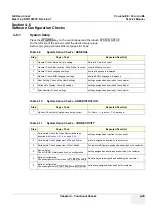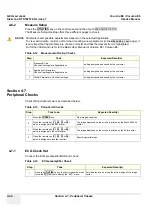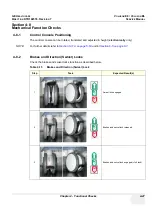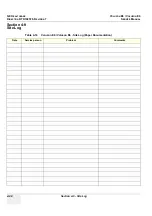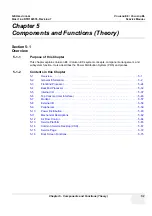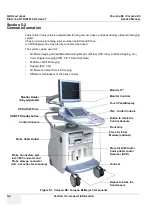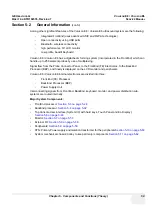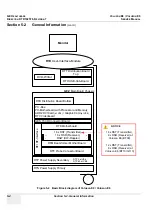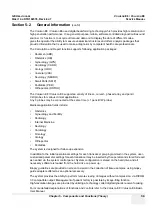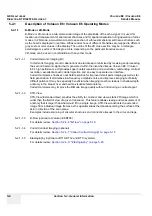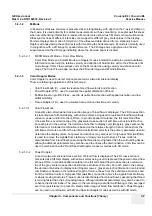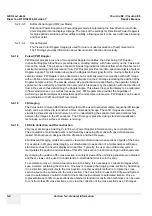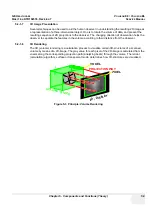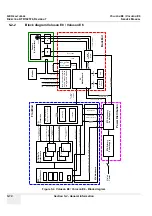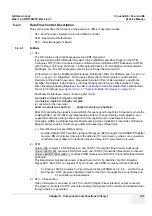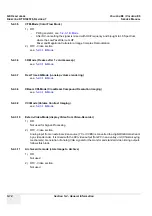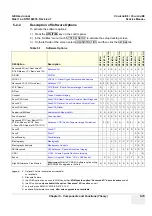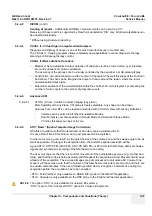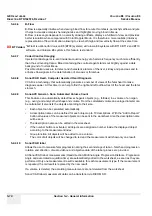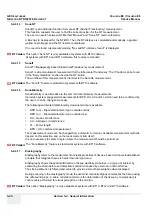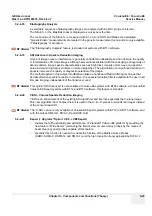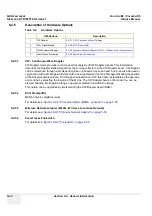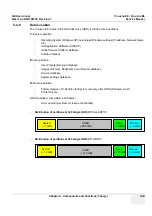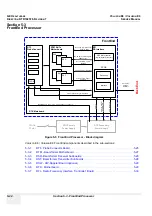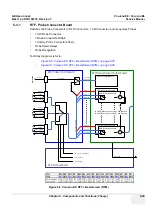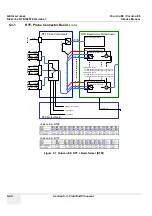
GE H
EALTHCARE
DRAFT
V
OLUSON
E8 / V
OLUSON
E6
D
IRECTION
KTD102576, R
EVISION
7
DRAFT (A
UGUST
23, 2012)
S
ERVICE
M
ANUAL
Chapter 5 - Components and Functions (Theory)
5-11
5-2-3
Data Flow Control Description
This section describes the functions of the boards vs. different operation modes.
•
RFI - Mid-Processor, System Control and DMA Controller
•
RTM - Beamformer Motherboard
•
RTV - Video Management Board
5-2-3-1
B-Mode
1.) RFI
The RFI contains the Clock-Management and PRF-Generator.
It generates(drives) BF(=Beamformer)-ASIC-Clock (200MHz) and Shot-Trigger for the RTM.
Configures RTF (Probe Connector board) and Beamformer (RSR and RST Subboards on RTM)
with Tx-Frequ, Tx-Focus, Rx-Focus, LineNo (lateral Position), Tx- Apodisation, RX-Apodisation,
Multibeam, etc. The RFI board also contains the Tx-Power-Reference-DAC.
Furthermore it contains Multibeam-DeInterleave, Subtraction Filter (for HI-Mode, see:
, DigitalTGC, DC-Canceler, Mixer (Part of Demodulator), LowPassFilter,
Decimation (Pixel rate Conversion), Magnitude Calculator (Part of Demodulator), Logarithmic
Amplifier, Re-Sample, Edge Enhance (Contrast Enhancement through differentiation), Frame
Filter, Blending (adapting Brightness in order to perfectly combine Nearfield-Frame with Farfield-
Frame in FFC-Mode, see:
Section 5-2-3-1-1 "Special B-Mode Techniques" on page 5-12
Multibeam-DeInterleave means: Incoming Pixel order
shot1
pix1
-shot2
pix1
-shot3
pix1
-shot4
pix1
-
shot1
pix2
-shot2
pix2
-shot3
pix2
-shot4
pix2
...
is converted to the new order:
shot1
pix1-
shot1
pix2-
shot1
pix3..... -
shot2
pix1-
shot2
pix2-
shot2
pix3.....
After DC-cancelling the signal is mixed with RX-Frequency and brought to LF-Spectrum, where the
LowPassFilter cuts HF. Mixer and Magnitude-Calculator arrange Complex Demodulation, and
Logarithmic Amplifier arrange the conversion from High-Dynamic LinearSignal to the Low-
Dynamik(e.g.8Bit) Log-Signal. Several Postprocessing steps (LineFilter, FrameFilter, ReSample,
Edge Enhance) enable smooth image quality while keeping contrast high.
a.) Direct Memory Access (DMA) section
B-mode-Data from RFI is written via Signal Processor (SP) Channel 0 into SDRAM Fifo Buffer
memory. DMA Controller 0 transfers the data into PC main memory where scan conversion
is performed per software. Cine Mode: Reserved area in PC main memory is used.
2.) RTM
Voluson E8: contains 16 RSR (Receiver) and 16 RST (Transmitter) Beamformer Subboards.
Voluson E6 (BT09): contains 8 RSR (Receiver) and 16 RST (Transmitter) Beamform. Subboard.
Voluson E6 (BT10/BT12/BT13): contains 8 RSR (Receiver) and 12 RST (Transmitter) Beamformer
Subboard.
This Beamformer Subboards consist of Beamformer-ASIC, Tx-Amplifier, Rx-TGC-Amplifier,
Signal-ADC. Each RST can support 16Tx-Channels, each RSR can support 16Rx-Channels.
-
Tx-Channel: ASIC generates Tx-Freq through dividing 200MHz by 2,3,4,5,... and Tx-Focus.
-
Rx-Channel: ASIC generates Sample-Clocks for the ADC, manages Rx-Focus (Delay and
Chain-Adder) and Apodization.
3.) RTV - Video section
Video Information is provided by the PC on the DVI (Digital Visual Interface) output connector.
The signal is connected to RTV, where the analog VGA signals for the monitor and standard video
timing outputs are generated.

